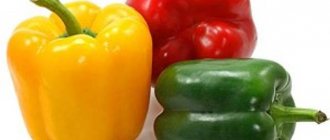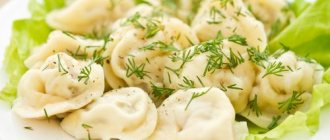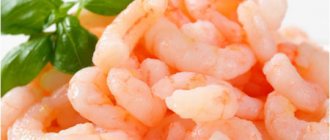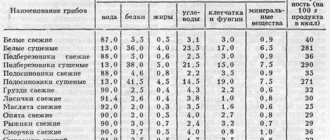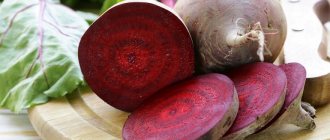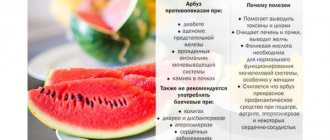Beneficial properties of pepper for the body
Pepper is a valuable treasure of vitamins, mineral components, and nutrients. It contains:
- vitamins A, B, C, E, K, P, H;
- potassium, calcium, magnesium, phosphorus, fluorine, iron, copper, sodium;
- organic acids (folic, ascorbic, pantothenic, etc.);
- alkaloids;
- phytoncides;
- flavonoids;
- choline;
- cellulose.
90 percent of the product consists of water. 100 grams of peppers contain 5 grams of carbohydrates, 1.2 grams of protein, 0.3 grams of fat and 3.5 grams of dietary fiber. Despite this high nutritional value, peppers are a low-calorie vegetable. One hundred grams of sweet bell pepper contains only 27 kcal, and hot one - 40 kcal.
Thanks to such a rich composition, the product has a wide range of beneficial effects:
- Nourishes the body with essential elements.
- Strengthens the immune system.
- Nourishes the retina of the eyes, improves vision.
- Activates brain function, improves memory.
- Has a calming, anti-stress effect.
- Strengthens vascular walls, reduces their permeability.
- Strengthens the heart muscle.
- Prevents the formation of blood clots.
- Helps improve blood composition and prevents the risk of anemia.
- Normalizes the functioning of the sebaceous glands.
- Improves appetite.
- Stimulates the secretion of gastric juice and digestive enzymes.
- Neutralizes the effect of carcinogens.
- Restores intestinal microflora and improves peristalsis.
- Cleanses the body of cholesterol and prevents the formation of cholesterol plaques.
- Improves digestion and metabolism.
- Helps cleanse the body of toxic substances.
- Reduces the risk of stroke.
- It has a powerful antioxidant effect, thereby reducing the risk of cancer.
- Prevents the development of the inflammatory process in nerve cells.
- Helps reduce high blood pressure.
- Strengthens bone tissue, improves the condition of hair and nails, promotes their growth.
- Improves skin condition, maintains its elasticity and tone, and counteracts the formation of wrinkles.
Hot peppers have powerful antibacterial properties; sweet peppers also have them, but to a lesser extent. Red peppers are enriched with beta-carotene and are very beneficial for maintaining healthy vision. It also contains the alkaloid capsaicin, which stimulates the digestive system and prevents the development of thrombosis. Green and yellow vegetables are rich in ascorbic acid, potassium and iron, which helps improve the functioning of the heart, brain, and normalize the conduction of nerve impulses.
Pepper to pepper - discord
The vegetable, which belongs to the Solanaceae family, has many varieties. In central Russia and its south, annual vegetable crops are widespread. It is necessary to distinguish between sweet and bitter (spicy) varieties. The latter are classified as spices. Their fruits are called pods. They are prohibited for use by patients with pancreatitis, gastritis, cholecystitis.
Bitter varieties owe their pungency to the substance capsaicin. Healthy people eat spicy vegetables to add flavor to their meals. Fresh hot peppers contain 5–6 times more vitamin C than citrus fruits. Capsaicin thins the blood, preventing the formation of blood clots.
Sweet varieties include bell peppers. The most valuable vegetable is also called paprika. Its fruit (false berry) is partially empty, the seeds are inside it. Large, short compared to hot peppers. Its thick fleshy walls are covered with skin. Externally, the fruit resembles a tetrahedral figure, with an average length of 7–8 cm.
Individual representatives reach 20–25 cm. Its color indicates the stage of maturity, at first it is green, then red or yellow. Ripe sweet peppers contain slightly more carbohydrates, and therefore calories, than green peppers. 23 kcal and 27 kcal, respectively, calculated per 100 g of product.
Under what conditions should you not eat pepper?
Pepper is a very healthy and nutritious product, however, it is not recommended to be consumed if:
- Hypertension (except for sweet red pepper, since this type of product helps reduce high blood pressure, and hot pepper, on the contrary, helps to narrow blood vessels and increase blood pressure).
- Increased excitability of the central nervous system.
- Personal intolerance to elements contained in the product.
- Acute diseases of the digestive tract.
- Epilepsy.
- Damage to the liver, kidneys.
- Increased acidity of gastric juice.
For diseases of the gastrointestinal tract, eating spicy vegetables is especially dangerous, since the substances contained in it will greatly irritate their tissues.
Consumption rates and benefits
Pepper is one of the healthiest vegetables. It contains substances necessary for the body to function properly:
- vitamins - A, group B, C, E;
- minerals - potassium, phosphorus, iron, calcium;
- antioxidants;
- phytoncides.
Speaking about whether it is possible to eat dishes made from bell peppers with pancreatitis, doctors recommend adhering to daily consumption norms. The permissible amount of product consumption for chronic pancreatitis is two vegetables per day. This amount of product has a beneficial effect on the body:
- lowering cholesterol levels;
- strengthening the vascular wall;
- blood thinning;
- nutrition of nerve fibers;
- improvement of metabolism;
- increased visual acuity;
- restoration of intestinal microflora;
- strengthening the immune system;
- reduction of stressful influences;
- strengthening skin, hair and nails.
Also, some varieties of pepper suppress the effect of carcinogens, which prevents the development of cancer.
The diet for pancreatitis is quite strict. It is necessary to reduce the load on the pancreas and prevent exacerbations of the disease. Bell pepper is allowed for food for pancreatitis, but in limited quantities.
Pepper is a very healthy vegetable. It contains a large amount of vitamins and biologically active substances, thanks to which the use of the product helps to improve the functioning of the heart, blood vessels, brain, cleanse the body of cholesterol, normalize digestion and metabolism. At the stage of stable remission, it will help restore the health and functionality of the pancreas.
Is it possible to eat peppers if you have inflammation of the pancreas?
Pepper and pancreas go well together. The product has a beneficial effect on the organ:
- Activates the production of digestive enzymes and gastric juice.
- Improves digestion and metabolism.
- Normalizes intestinal motility, thereby improving the outflow of enzymes from the pancreas to the intestine.
- Strengthens the organ's immunity.
- Helps renew damaged pancreatic tissue.
- Has antibacterial properties.
At the same time, if the pancreas is damaged, a diet is indicated, which involves strict restrictions in the diet. Whether it is possible to eat sweet peppers with pancreatitis depends on the type of product, stage and characteristics of the course of the disease.
In acute form
It is strictly forbidden to eat peppers in acute pancreatitis. The product activates the production of digestive enzymes and gastric juice, which is harmful to the pancreas during the acute stage.
During its inflammation, pancreatic enzymes cannot enter the intestines due to swelling and spasms of the pancreatic ducts. Therefore, they are activated in the gland and destroy its tissue. In view of such processes, all actions during an acute attack of pancreatitis are aimed at suppressing the secretion of digestive enzymes.
In addition, the product is rich in acids and fiber. During the period of exacerbation of the disease, these substances will irritate the mucous membranes of the digestive organs, which will lead to an exacerbation of the inflammatory process, increased pancreatic pain, and can also provoke the development of symptoms such as nausea, vomiting, bloating, and flatulence.
In the chronic stage and remission
Bell peppers for pancreatitis, as well as some varieties of products with a small peppercorn, are not only possible, but also useful to eat when stable remission occurs, as well as in the chronic form of the disease beyond the stages of exacerbation. Eating the vegetable will help restore the enzyme function of the pancreas, restore damaged organ tissue, strengthen the immune system of the gland, and cleanse it of toxins and harmful substances.
The product reduces cholesterol levels in the blood, thereby significantly reducing the risk of developing cholecystitis, which is very often a consequence of inflammatory processes in the pancreas.
A number of studies have proven that peppers, especially red ones, contain substances that suppress the reproduction and growth of cancer cells. Therefore, consuming such a product in small quantities reduces the risk of developing pancreatic cancer.
Sweet pepper for chronic pancreatitis, as well as at the stage of remission, normalizes digestion and metabolism. It improves intestinal motility, which facilitates the passage of pancreatic enzymes.
You can start introducing vegetables into your diet a week after the symptoms of an attack of the disease have subsided. At first, the permissible amount of the product is small: 30-40 grams per day. If the body’s reaction is normal and there are no symptoms of deterioration, it is gradually allowed to increase the amount of vegetables consumed to 70-100 grams per day.
Use for pancreatitis
In the acute stage of the disease, the use of bell pepper is not recommended. During remission, everything will depend on what stage of inflammation the pancreas is at. Some patients cannot consume this vegetable due to individual intolerance.
When the condition of the pancreas has stabilized, sweet paprika can be gradually introduced into the patient’s diet. It can be consumed only after heat treatment, that is, the pepper must be boiled, steamed or stewed. Before use, the prepared vegetable is thoroughly ground.
After such processing, it will be easier to absorb by the body and will not cause harm to it.
You should start using paprika with a small portion and carefully monitor the patient’s condition after eating. If the gastrointestinal tract works stably, then the daily portion can contain up to 200 g of this vegetable. A weakened body requires healthy foods, and bell pepper is one of them. Gradually it will be possible to introduce it into the menu in fresh form.
Important information: How to take Duspatalin for pancreatitis
Allowed and prohibited varieties of vegetables
All types of pepper have almost the same composition of biologically active and mineral substances. However, they still differ in the presence and concentration of some of them. Hot peppers have more ascorbic acid and are also rich in acids and capsacins, which give them bitterness. Therefore, not all varieties of the product are approved for use for pancreatitis.
You should remember the basic rule: sweet (Bulgarian) peppers, as well as some varieties with a light peppercorn, are allowed for use for pancreatic ailments. All types of bitter, pungent vegetables are prohibited even at the stage of stable remission, as well as in cases of chronic pancreatitis.
| Permitted varieties | Prohibited species |
| Sweet green | Chile |
| Sweet yellow | Jalapeño |
| Sweet black | Red Savina |
| Sweet pod | Bird's eye |
| Pimenta | Dragon breath |
| Anaheim | Kaneisky |
| Tabasco | Nonivamide |
Regarding the form of heat treatment, boiled and stewed peppers are allowed for use for pancreatitis. Baked product, when consumed in large quantities, can contribute to the development of caries.
Bell pepper in the acute phase of the disease
One of the most important principles of treatment of the acute phase of pancreatitis is to ensure a state of complete rest for the inflamed pancreas.
In this case, there is an elimination and disposal of all factors that stimulate its work and the secretion of gastric juice, whose components affect pancreatic activity.
Fasting and rest for 1-2 days are recommended.
It is forbidden to eat not only fresh, but also stuffed peppers for pancreatitis, which is due to the high content of substances in paprika such as:
- Ascorbic acid;
- Alkaloids;
- Phytoncides.
Some doctors are of the opinion that drinking bell pepper juice even in the acute phase of the disease is completely safe and will not cause harm to the patient’s health. However, this version has no reasoned support.
Considering the fact that most doctors recommend not eating food during this period and fasting for a while, it is best not to experiment and completely abandon the vegetable.
Pepper recipes
The vegetable can be eaten fresh, as well as boiled, stewed, and baked. It is perfect for preparing salads, soups, borscht, cabbage rolls, and vegetable seasonings for side dishes.
Stuffed pepper
This is a very popular and tasty dish. Components:
- 10 pieces of pepper;
- 400 grams of minced chicken or turkey;
- 200 grams of boiled rice;
- 150 grams of sour cream (low fat);
- 100 grams of tomato paste;
- 2 pcs. carrots;
- 2 small onions;
- salt, vegetable oil.
Chop the peeled onion and grate the carrots using a grater. Mix part of the onion and half of the carrots, lightly sauté the vegetables until soft in a small amount of vegetable oil.
Combine minced meat and rice, add fried onions and carrots, add salt. Mix everything well. Wash the pepper, cut off the top, remove seeds, and stuff. Combine sour cream and tomato paste.
Place the remaining onions and carrots on the bottom of the frying pan or saucepan, add sour cream and tomato sauce, and place the pepper on top. Fill the pan halfway with water. Close the container with a lid and simmer for 40 minutes. Before serving, pour the sauce in which it was placed on top of the peppers.
Stew dish
Components:
- kilogram of pepper;
- half a kilogram of tomato;
- a tablespoon of sugar;
- three onions;
- a pinch of salt;
- a little vegetable oil.
Wash the vegetables, dry them, put them in a saucepan. Fill the container with water so that the liquid just covers the product. Set to cook over medium heat. Meanwhile, fry the onion, add sliced tomatoes, grated carrots, sugar and a little salt, then add a little water, cover the pan with a lid and simmer the ingredients.
When the pepper and vegetable mixture, which is cooked in a frying pan, are half ready, they need to be combined. Add salt to the mixture, mix everything carefully and cook until fully cooked.
Pepper and cheese appetizer
Components:
- two red sweet peppers;
- 100 grams of cheese;
- two eggs;
- 100 grams of sour cream (low fat);
- dill, parsley;
- a pinch of salt.
Grate the cheese and eggs, add sour cream, chopped dill and parsley to the mixture, add salt and mix. Peel the vegetable from seeds and tops, wash and dry. Then stuff the vegetables to the top with filling. Place the filled peppers in the refrigerator for 20 minutes. Before serving, cut into slices.
Article rating: (total 1 votes, rating: 5.00 out of 5)
Consumption rates and benefits
It must be remembered that you need to eat fresh bell peppers in limited quantities, like most other vegetables for diseases of the pancreas.
If the patient is characterized by weakened and unstable digestion, the rate should be limited to a minimum. In case of pancreatitis, it is very important to monitor the body’s reaction to the introduction of a new product into the diet, wisely regulate the amount of product consumed, and temporarily remove it from the diet during relapses of the pathology.
The beneficial and harmful properties of bell pepper are discussed in the video in this article.
| Sweet green | Chile |
| Sweet yellow | Jalapeño |
| Sweet black | Red Savina |
| Sweet pod | Bird's eye |
| Pimenta | Dragon breath |
| Anaheim | Kaneisky |
| Tabasco | Nonivamide |
